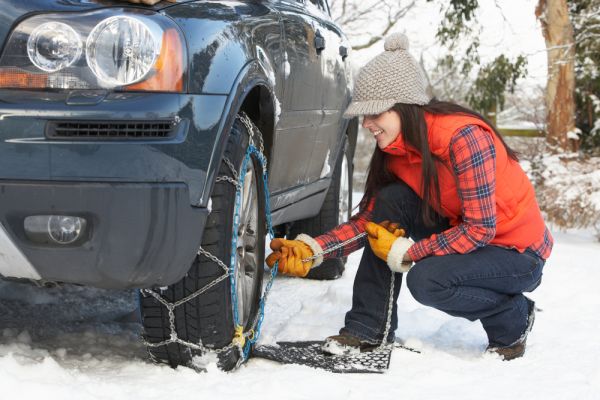The snow has fallen, the snow plows are warmed up and ready to hit the streets in full force, but how about you? Is your car safe to hit the slick, snow covered streets? Weather of any kind can affect your vehicle’s performance, but winter weather conditions can increase your chances of being involved in car accidents and if you fail to keep your car in good working order, an unfortunate accident might be your fault.
Winter Maintenance 101
Owning and maintaining a car can be a costly investment, but it’s less expensive in the long run if you stay on top of scheduled maintenance. Yes, when Mom and Dad constantly hounded you to check your oil and your tire pressure, they were on to something. Just like we change out our wardrobe for more practical clothing and footwear during the winter months, our vehicles need some winter appropriate changes, too. The Nationals Safety Council (NSC) has some helpful tips on how to winterize your vehicle for safety on the road. First of all, you’ll want to make sure all certain components of your car are in good working order. Cold temperatures can make it more difficult for cars to run well, so it’s vital to take a look at these parts. Find a mechanic you trust and head in for a “checkup”:

- Heater and Windshield Defroster:
A car without heat is not only uncomfortable, but dangerous. Without a proper heat, a windshield can get fogged up very quickly decreasing visibility.
- Battery:
If you’ve never had to jump start a dead battery in the winter time, consider yourself very lucky. If your car battery is over 4 years old, it’s time to get it tested. It’s also a good idea to check the cable connections and check for any corrosion. Changing batteries in the dead of winter can be difficult. Get a head start and replace your vehicle’s battery now.
- Brakes:
For obvious reasons, brakes are one of the most important safety features of a vehicle. You brakes should be checked for any “wear and tear” and have them checked out if it’s difficult to stop, you hear a grinding noise, or you have to press down harder and farther to stop. Have your brake fluid checked, too.
- Lights:
It’s essential that your headlights, turn signals, and other light indicators are in working order. Many times, especially during inclement weather, the only thing that makes you visible to other drivers are your headlights and your brake lights. If a bulb is burned out or a connection is shorting, drivers around you will not be aware of your intentions.
- Fluids:
Antifreeze, oil, steering fluid and even windshield wiper fluid are all essential for safe driving. Older rubber hoses can crack in cold weather, causing fluids to leak, so make sure all hoses and clamps are tight and fluids are topped off.
- Tires:
Depending on what kind of tire you have, they may last longer than others. Make sure you have your tires rotated when scheduled to prevent uneven wear. An old, worn (or “bald”) tire is worthless on winter roads; you are better off walking! Good traction and proper air pressure can help keep you from getting stuck. Getting new tires can be spendy, but it’s a worthy, life-saving investment.
Ready for Winter Driving?
Now that your car is safe and winterized, are you prepared for winter weather? A wintery mix of sleet, snow, and zero visibility can occur unexpectedly and within minutes of your travel, but in order to avoid a car accident, it’s important to stay calm and drive smart and safe. Before you head out on the road, it’s a good idea to look at road conditions and the anticipated forecast. While the weather and roads can change quickly, it’s wise to be somewhat prepared.
-
Always give yourself some extra time and keep your distance from other vehicles, especially snow plows. Remember, when the roads are snowy and icy (and don’t forget about the black ice) it’s harder to stop quickly.
-
Be a mindful, safe, and patient winter driver. If you are the type of driver who is a complete bundle of nerves during the first snowfall, either stay home or find another form of transportation. A too slow, nervous driver can be just as dangerous as a reckless, aggressive driver.
-
Have a winter emergency kit in your car, just in case you become stalled. Winter temperatures can drop suddenly, especially once the sun goes down, so you will need to make sure you have enough warm, winter gear and blankets in your car. Other good “kit” items include a flashlight, jumper cables, non-perishable food (i.e. trail mix), cat litter or sand for tire traction, a snow shovel, and a first aid kit. Always make sure your cell phone is fully charged before heading out. While you should never use your cellphone while driving, it’s important to have one if you become stranded or stuck.
Winter driving can be a stressful hassle, but if your vehicle is winterized and you are prepared to drive in any kind of weather, the chance of you causing a winter car accident is decreased. Invest in your safety; make an appointment for your vehicle’s winter checkup today!

